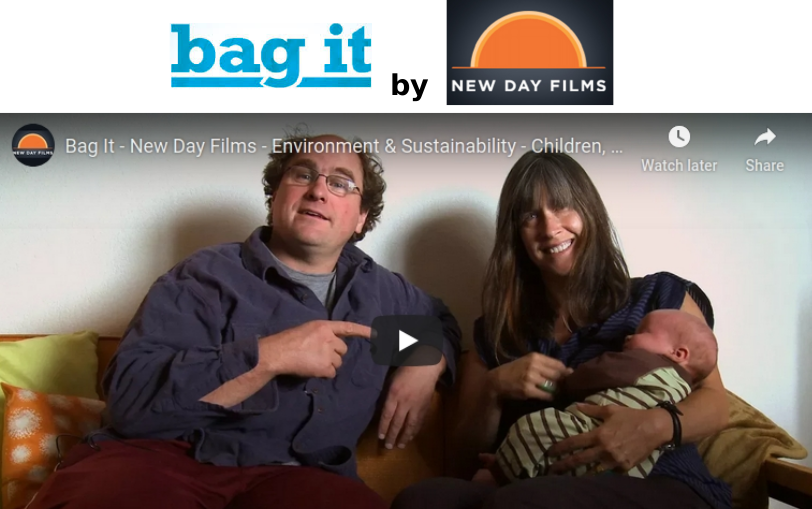
SUSTAINABILITY ACTION ANNUAL MEETING AND SCREENING OF “BAG IT” FILM
Friday, 22 January 2021, 7:00pm
virtual Zoom meeting, Lawrence KS 66044
You are invited! The Sustainability Action Network annual meeting will feature an on-line screening of the film “Bag It”, about plastics pollution and banning the bag. The film is an hour and fifteen minutes. Following the film will be a open discussion of plastic pollution, and how to get the City of Lawrence to finally ban the bag.
Sustainability Action has been advancing ecological sustainability since 2007. We focus on helping individuals live a sustainable lifestyle, while pushing institutional policy change that can impact the broader population. We work in areas of renewable energy, healthy climate, local food and permaculture, multi-modal transportation, prime farm soils preservation, and ecosystem protection.
Some of our 2020 actions and accomplishments include:
- Along with collaborating groups, we got the City of Lawrence to commit to 100% renewable energy
- The bicycle boulevard we promoted got built on 21st Street
- We helped stop for the fourth time a mega-retail center in the 100-year floodplain of the Wakarusa Wetlands
- We got the City of Lawrence to negotiate with Black Hills Energy to provide renewable biogas in Lawrence
- We challenged Evergy’s transparency in their cleanup of Lawrence coal ash pits, and in their plans for shutting the Lawrence Energy Center coal plant
- We sent testimony to the Kansas Corporation Commission in opposition to Evergy’s discriminatory rooftop solar rate proposals

The meeting will also include: an introduction to our Board, a review of our 2020 accomplishments, an open discussion on projects for the upcoming year, a brief financial report, and Board of Directors election. To join the meeting, just click this Zoom link at the time – https://zoom.us/j/91950806764?pwd=TUpEdzdUNUtMMGN4UWpvVmRQQ2FIdz09. The passcode for entry is 137922.

Scientists have estimated that, since 1950, humans have generated 9.1 billion tons (8.3 billion metric tonnes) of plastic. About 76% of that has ended its useful life and become waste. Of that 7 billion tons of waste, only 9% has been recycled, the rest going to landfills, being incinerated, or choking and poisoning streams and oceans. The U.S. alone produces on average 35.4 million tons of plastic (32 million metric tonnes) per year, according to the EPA – Humans Have Created 9 Billion Tons of Plastic Since 1950.
This is a far cry from the public relations narrative of recyclability. Because the U.S. lacks particular equipment and market interest, most types of plastic are not recyclable, only #1 and #2. And even so, only #1 plastic bottles are regularly recycled, according to a study by Greenpeace – U.S. Survey of Plastics Recyclability. The Greenpeace report said that plastics #3 through #7, called mixed plastic, are more difficult, more expensive, and more energy intensive to process than numbers 1 and 2. Most single-use retail bags are #4.
Speaking for the Association of Plastic Recyclers, Kara Pochiro, said “What the United States needs is infrastructure equipped to process other kinds of plastic”. But John Hocevar of Greenpeace emphasized a more basic and elegant solution, saying “The really simple answer is we have to stop making so much throwaway plastic” – How much plastic actually gets recycled?.
The unimaginably large amount of plastic materials comes with equally thorny problems:
But because humans enjoy many of the properties of plastics, many problems are either below the radar or purposely ignored for the benefit of petrochemical companies. Plastics are waterproof and lightweight. Clear plastic packaging is a great marketing tool. Plastics can be formed into virtually any shape (hence the name “plastic”). They make convenient items like paint and clothes and containers. But the biggest reason we tend to overlook the problems is because petrochemical PR has misled us.
An article by NPR and PBS reported that public officials, like most people, don’t want to be told the sad truth that only a tiny fraction of plastics can economically be recycled. Laura Leebrick, a well-intentioned but naive waste hauler, recounted telling a city council that it was costing more to recycle plastic than to dispose of it. They were in denial and said “You’re lying. This is gold. This is valuable”. But NPR explained “It’s not valuable, and it never has been. And what’s more, the makers of plastic — the nation’s largest oil and gas companies — have known this all along, even as they spent millions of dollars telling the American public the opposite”. One industry insider wrote in a 1974 speech “There is serious doubt that [recycling plastic] can ever be made viable on an economic basis”.
Regardless of the fact of the matter, the public was led to embrace recycling. NPR noted that back in the late 1980s, plastic was in a crisis because of too much plastic trash. The public was getting upset. The genius — and fraud — of the plastics industry was to convince the public that recycling was working. Starting in the 1990s, the public saw an increasing number of commercials and messaging about recycling plastic. When they believed the hype, they felt fine about buying more new plastic. This of course was the goal of Big Oil and Big Gas — more new plastic sold meant more profits.
Still, plastic recycling grew slowly. Recyclers were losing money when only soda bottles and milk jugs were brought in. The industry needed a new strategy. Oil and plastics executives began a quiet campaign to lobby almost 40 states to mandate that the triangular recycling symbol appear on all plastic, even if there was no way to economically recycle it. Some environmentalists also supported the symbol, thinking it would help separate plastic. It didn’t — it only made all plastic look recyclable.

With the various numbered recycling symbols, the industry succeeded in gaining widespread acceptance of recycling, even while knowing it is unfeasible. But it became a failure for recycling operators. People began throwing every kind of plastic into recycling bins, even though recyclers lost money on all but #1 and #2. Worse, it became a cost prohibitive sorting nightmare for the operators, but also for communities struggling with choosing source-separated recycling vs mixed-materials recycling. A lack of an industry standard further hampers recycling feasibility because of regional market irregularities, and because of recycling truck and equipment disparities – How Big Oil Misled The Public Into Believing Plastic Would Be Recycled.
Plastic recycling was never intended to work to any degree. Attempts by local communities, retailers, recycling operators, and materials marketers to find a way to make it work were random and mostly on their own. Big Oil and Gas were the only winners. Now with the nose-dive of gasoline and diesel sales, and communities beginning to ban natural gas for all-electric buildings, Big Oil and Gas are shifting their focus to increase plastic production – Big Oil’s hopes are pinned on plastics. It won’t end well.
A large part of their plan is to flood Africa with plastics as an untapped market. Currently 34 of the 54 African countries have committed to phasing out single-use plastic. The lobby group pushing to open up Africa, the American Chemistry Council, has members including Shell, Exxon and Total – Oil-backed trade group is lobbying the Trump administration to push plastics across Africa. The industry mantra has not changed from advice given to Dustin Hoffman in the 1970 film “The Graduate” – In a word, plastics: The Graduate – YouTube.

Possibly more than any other climate catastrophe is the specter of drought. It is true that a hotter climate pumps more moisture into the atmosphere, and does bring more rain. But the extreme climate fluctuations cause more severe storms not necessarily where rain is needed. By the same token, more severe drought is tending to scorch areas where rainfall has diminished. Storms and flooding certainly can inflict immediate destruction, but drought desiccates entire regions for extended periods, killing ecosystems and economic systems both.
As drought is becoming more widespread – in the Pacific Northwest, the Amazon basin, Central America, the Sahel in Africa, Mongolia – a recent study published in Science Advances is predicting a 21st Century drought in the U.S. southwest and the High Plains, possibly for 100 years – US faces worst droughts in 1,000 years, predict scientists.
The Ogallala Aquifer, also known as the High Plains Aquifer, underlies an estimated 174,000 square miles of the Central Plains, mostly under Nebraska, Kansas, Oklahoma, and Texas, but also areas in New Mexico, Colorado, Wyoming, and South Dakota. The Ogallala is one of the largest underground freshwater sources in the world, holding as much water as Lake Huron. These agricultural states are already experiencing drought, prompting farmers to pump the Ogallala Aquifer at an alarming rate.
But as 60 years of pumping have pulled groundwater levels down by scores of feet, as much as 250 feet in southwest Kansas, most of the creeks and rivers that once veined the land have dried up. Throughout the 20th Century, the US Geological Survey estimates irrigation depleted the aquifer by 253 million acre-feet, about nine percent of its total volume. The Denver Post analyzed federal data and found that the aquifer shrank twice as fast from 2011 through 2017 as it had over the previous 60 years.
This is not sustainable. Considering the drought, some options are to switch from growing very thirsty corn to more dryland crops like winter wheat, beans, or sunflowers, to rely less on cornfed feedlot cattle, and to adopt no-till methods plus cover crops. But all the same, it still comes down to water. To address the depletion of the Ogallala Aquifer, two counties in far west-central Kansas are exploring natural ways of recharging the aquifer.
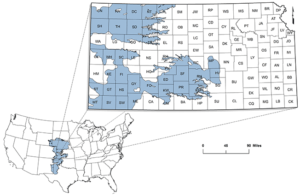
An initiative begun in 2016 by the Wichita County Water Conservation Area (WCA) has been awarded $1.4 million by the USDA Natural Resources Conservation Service (NRCS) to study how playa wetland lakes can help recharge the Ogallala – NRCS Awards $1.4 Million to Support Local Water Sustainability Project. Partnering in this effort will be Greely County Conservation District, the Kansas Association of Conservation Districts, the Playa Lakes Joint Venture, and Ducks Unlimited, in a program called the Groundwater Recharge and Sustainability Project (GRASP).
Playas are shallow, circular-shaped wetlands that are primarily filled by rainfall, although some playas found in cropland settings may also receive water from irrigation runoff. Some think that playas are carved by wind, but it’s more likely they are formed by land subsidence – in other words, sinkholes. Playas are ephemeral, filling only from Spring rainfall, and the average size being 3.7 acres. Recent research has revealed that water provided by playa wetlands adds three inches to the level of the Ogallala aquifer each year – Playas – Ephemeral Wetlands of the Great Plains – KU Aquatic Ecology Lab.
According to Abe Lollar, a biologist with Ducks Unlimited, native prairie shortgrass seed mixes are a necessary part of the playa restoration process. The planted grass buffer acts like a natural water filter. Rainwater from surrounding fields runs into the playa and carries sediment and contaminants with it. The shortgrass will stop much of the sediment from entering the playa and improve the quality of the water entering the aquifer. It will also provide habitat and a food source for birds and pollinators.

Playa lakes are arguably the most significant ecological feature in the High Plains, even though they cover only 2 percent of the region’s landscape. Supposedly there are more than 80,000 playas scattered across the Great Plains. The Kansas Geological Survey reported that varied estimates put the number of High Plains playas between 25,000 and 60,000. However University of Kansas researchers recently identified more than 22,000 in Kansas alone. No one has ever tried to count them all – Playas in Kansas and the High Plains.

Michael Moore released a film late April 2020 for free viewing on YouTube called Planet of the Humans. Essentially, the film, directed by Jeff Gibbs with Moore as executive producer, is a broadside against the destructive impact from human activities on the planet – not an uncommon theme anymore. In doing so, the Gibbs-Moore analysis points to culprits of overpopulation, over consumption, infinite economic growth, and industrial society itself, but surprisingly also takes to task renewable energy.
The claim by Gibbs-Moore that renewable energy, as well as some of it’s leading proponents, could be enabling ecological destruction is both intriguing and aggravating. Intriguing because to a limited extent it’s correct. Aggravating because they present so much misinformation trying to make their case – much of which is outdated material from 2012 Gibbs archives.

The common thread in all Moore films is that they’re “guaranteed to generate anger, debate, and, hopefully” knowledge. Although this film disappoints with its errors, the vast number of critical reviews are sure generating insights themselves. A really good review is from Tim Hjersted of Films For Action here in Lawrence KS, one of the founders of Sustainability Action Network – Films For Action’s Statement on Planet of the Humans. The FFA piece highlights many internal contradictions in the film, supported by salient embedded links. Hjersted elaborates with a key reference of – Powerdown: Let’s Talk About It – a concept that must be central to all solutions to ecocide. He says “No one ever mentions the other side of the Stop Coal equation: the powerdown. We have to start talking about what we are willing to give up. Powerdown means shifting to tools, techniques, lifestyle habits which use LESS power. It means reducing our energy consumption overall. Across the board. In totality”.
When Planet of the Humans attacks renewable energy, they argue that renewable technology is dependent on fossil fuels, therefore invalid. One major flaw with the Gibbs-Moore position is that they are fixated on large utility-scale renewables, and ignore village applications as well as forms of renewables other than just electricity. Another flaw is their condemnation of renewables because some fossil fuels were used to manufacture them. Gibbs-Moore are blind to the fact that a societal infrastructure made with a small percent of fossil fuels is far superior to one made entirely by fossil fuels. But if that greater energy efficiency is leveraged to expand human consumption and extend human resource extraction – granted, one the better points of the film – then it’s the economic growth that is the problem, not the use of renewable energy.
In a nutshell, it’s about frugality. Yes, there is a problem with the renewable energy industries. But the problem is not so much with the fact of the matter, as it is with the technocrats trying to maintain the highly consumptive industrial society lifestyle using renewables. It can’t be done, not to mention it’s ecologically suicidal.
Here’s an analogy. Solar advocates who pioneered the movement were very clear that, when designing a solar PV system, the first thing you do is reduce the level of electricity use. Eliminate as many electric applications as possible, and for what you absolutely need, use the most efficient ones. As such, you can minimize the size and output and materials of your solar array. Conservation comes first – frugality.
In contrast, corporate industrialists want to keep all the electric gizmos and consumptive lifestyle cranking full-bore, and supersize renewable infrastructure to match. Bigger is better, same as it always was. Gibbs-Moore rightly condemn big time “green energy” industrialists who are in it purely for the profit. However, different folks buy into the model of massive scale renewables for different reasons. Some for lack of understanding (watch misleading documentaries), some out of greed (sell more stuff – growth economy), some due to fear and loathing (won’t catch me with dirt under my fingernails), and some for sympathy and/or guilt (help the world’s poor get a better standard of living).

A riding lawn mower for every global citizen with accompanying high-energy lifestyle, theoretically powered by wind and solar electricity, is a powerful myth. But it’s physically, ecologically, and agriculturally impossible for the approximately 82% of humans in less developed countries to achieve the privileged lifestyle enjoyed by the roughly 18% of humans in industrialized societies (world total of 7.8 billion now). Institutionalizing renewable energy at such a gargantuan scale is what industrialists are trying to palm off to people who have well intentioned green living hopes.
It must be understood that corporate industrialists are not motivated by concerns to raise living standards or provide for sufficiency. They care only to maximize throughput (an Amory Lovins term), which maximizes their income. Throughput equals input (raw materials) made into stuff (flies off the shelf and breaks), and final output (trash). They don’t care who has money to buy, as long as someone does. The more people buying, or the more repeat purchases there are due to planned obsolescence, the faster the cycle goes. For them, renewable energy is just another means to drive consumption of more stuff. For those with a conservation ethic, renewable energy is a fundamental way to reduce consumption – a tool to help support soft ecological footprint lifestyles with small scale lights, pumps, motive power. It’s really a matter of intent.

And finally, it’s a mistake when discussing renewable energy to equate it only with electricity. The most cost efficient and energy efficient renewable energy device is a clothes line – think about it. Similarly, the most efficient solar collector isn’t PV or even solar hot water, but a pane of glass set into a heavily insulated box – with many variations on that theme, like solar oven, solar food dehydrator, bread box heater, or completely passive solar heated house. Renewable water pumping can be, and still is, done by simple windmills, or gravity run ram pumps. Low-head hydro generates electricity without damaging the stream ecology. Then there’s biogas from human or animal feces. The most efficient personal transportation means is the bicycle, running on carbohydrates, not hydrocarbons. And of course the absolutely most efficient renewable energy is photosynthesis – the transformation of CO2 and H2O into biomass powered by sunlight!
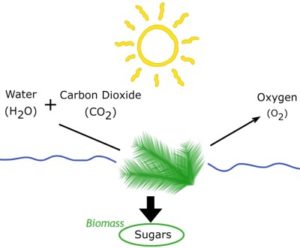
We guardedly encourage our readers to watch Planet of the Humans | by Michael Moore and Jeff Gibbs – YouTube. There are truths to be found in it, but all too often stated for all the wrong reasons. After watching that, there are several more enlightening documentaries at Films For Action – 20 Films to Watch After (or instead of) Planet of the Humans. Learn more at – Planet of the Humans Almost Gets the Real Problem, then Goes Full Ecofascism, and Why Planet of the Humans is crap.

The Cov-ID19 pandemic has changed our lives for the near future. We at Sustainability Action Network are practicing social distancing to “flatten the curve” – What is social distancing and how can it slow the spread of Cov-ID19?. We have decided to not hold or participate in large community events (10 or more by CDC guidelines). Our monthly meetings are usually 5-7 people, so our April meeting will tentatively take place.
You first read of Cov-ID19 here in our e-newsletter, back in January when there were only 59 cases in Wuhan China.
Because there’s so much unknown about the disease, particularly how it’s spread, the estimates are all speculative about how contagious it is, the percent infection rate of the population, who is a carrier, and the percent fatality rate – How does Cov-ID19 spread? These new studies offer clues. As of 21 March, there are 307,277 known cases of Cov-ID19 worldwide, growing exponentially, with 13,048 deaths, and 92,372 recovered. For cases outside of China, Marc Lipsitch of the Harvard Center for Communicable Disease has predicted a 40%-70% infection rate for adults. Not counting China, 40% of 4.6 billion adults amounts to 1.8 billion adults infected, rounded to 1 billion for the unreported cases that show no symptoms – Straightforward Calculations On Cov-ID19 Risks.

Those numbers are scary enough for someone with a grasp of science and statistics. But while epidemiologists are methodically crunching numbers and working towards developing a vaccine, the average person who has no clue is panic stricken. Too much exposure on TV and Facebook about society collapse, Road Warrior, and survivalists has folks primed for the worst. Deprivation is their watchword. They see closed restaurants and bars, canceled events, plummeting stock markets, work hours often reduced, travel restrictions, and more, and it’s no surprise that hoarding has become rampant.
Visions of empty food store shelves has swept through the country over worries that basic essentials may soon be in short supply. On the one hand, it’s reasonable to expect items like alcohol wipes or surgical face masks to run out soon in the face of the pandemic. But there’s no danger of a scarcity of toilet paper – except that if everyone buys several month’s worth, they are creating the scarcity. Silly as this seems, it illustrates a couple things. The average Joe and Jolene aren’t critical thinkers, having been spoon fed by our school system and Fox News. They also are highly enticed into impulse buying by the corporate media to keep the geegaw mill churning. To most, hoarding is very sensible.
Then again, maybe this is a dress rehearsal for the real thing. Twelve years ago when the 1% collapsed the economy by fraudulent sub-prime lending, at the time that peak oil drove the price of petroleum to $147 per barrel, there was good reason to suspect the world economy could collapse. These days, the combination of species die-off, ecosystem collapse, and climate disruption is propelling society towards economic and existential collapse. If or when that may occur, today’s shortages will pale in comparison to failed transportation, food supply, fresh water, and good governance. No amount of toilet paper will save your butt.
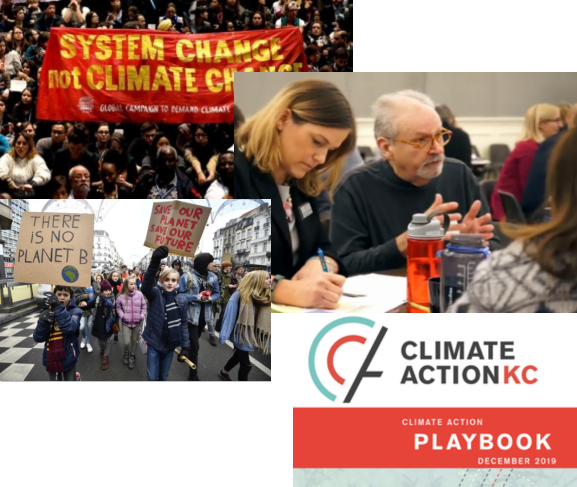
“Facilitating Climate Action at the Local Level” will be the program at this year’s annual meeting. Our keynote speaker will be Andy Rondon of Climate Action K.C.
ANNUAL MEETING OF THE SUSTAINABILITY ACTION NETWORK
Friday, 21 February 2020, 6:00pm
Douglas County Fair Grounds, Flory Building, 2120 Harper St. Lawrence KS 66046
Mr. Rondon participated in the hearings on Evergy’s rooftop solar penalty rates at the Kansas Corporation Commission, and he also helped write the Climate Action Playbook – Climate Action K.C. Playbook. Professionally, he has worked with Good Energy Solutions since 2016, a local Lawrence solar installation company – Good Energy Solutions. Prior to that, he worked in construction as a project engineer, estimator, and project manager. He has a Bachelor’s degree in Construction Engineering from Iowa State University.
The evening will begin with a pot luck dinner as in past years. The event will also include a review of our 2019 accomplishments, an open forum on projects for the current year, an introduction to our Board of Directors, and an election of new Board members. After the meeting and presentation, we’ll celebrate and socialize!
Local Solutions for Transition to a Sustainable Economy.
The Sustainability Action Network advances ecological sustainability through societal scale actions. While we work for personal lifestyle changes for individuals to minimize their carbon footprint, there is an imperative for institutional change to respond to the rapid onset of the triple global crises of Energy-Ecology-Economy. “Action” is our middle name. Visit us on the web at – Sustainability Action, and Sustainability Action | Facebook.

Ecological concerns over issues such as air quality or toxic radiation drive much progressive change, but as often as not, money prompts change. For example, early adopters installed rooftop solar mostly because it’s ecologically responsible, but it’s a dropping price point that attracts the average customer. Or, electric utilities initially installed wind generators because of lawsuits or regulations over coal pollution, but anymore, wind power is booming because its cost has dropped below that of coal.
However, as sound as this principle is, and as likely as the profit motive will bring some ecological solutions, major money players can manipulate the market to their own ends. Some examples of market distortion are: fracking operations proliferating in spite of losing money, nuclear power revival though it’s not cost-competitive with any other energy source, and corn ethanol fuel that takes as much fossil energy to make as is in the ethanol itself. Each of these can survive only because of large subsidies.
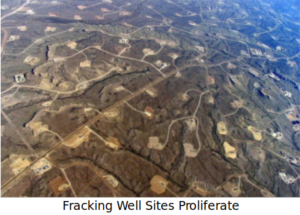
Fracking Subsidies: Fracking petroleum and natural gas is one of several “extreme energy” measures like deep sea wells, oil sands, and mountain top coal removal. All of them cost more than the old, easy, conventional fuels, but fracking costs so much more for extraction, that they actually sell the energy at a net loss. Their higher cost result from things like drilling deeper, drilling more wells that produce less energy, more complicated horizontal drilling, acquiring and disposing of process water, drilling in more remote areas, and more costly transporting the energy to markets (sometimes with disastrous consequences).
An article by Justin Mikulka in the journal “Resilience” summarized the ongoing failure of the fracking industry to make a profit. Mikulka asks “Who would be foolish enough to produce more oil than the existing infrastructure could handle?” He explains that “Frack operators across the country seem to have resisted the urge to reign in production and instead produce in excess. Unsurprisingly, this is not a recipe for profits”. But the fracking industry manipulates the numbers to appear profitable, in collusion with finance banks. Mikulka writes “It’s the Wall Street executives who are getting rich making the loans that the fracking industry struggles to repay”. It’s truly a perverse dynamic where banks could be choosing to invest in renewables, but greedily grab the gold from the option with the highest interest rates – climate-killing oil and gas – World’s Biggest Banks Are Driving Climate Change, Pumping Billions Into Extreme Fossil Fuels.
Nuclear Subsidies: Some outliers profess that nuclear electricity is carbon-free, and could be a key climate solution (ignoring the critical toxic waste costs for 10,000 years). First of all, nukes do produce CO2, from the uranium mining and milling and the immense use of concrete containment buildings. According to a report in Clean Technica, “The U.S. could achieve three times as much CO2 savings with renewables instead of nuclear, and for less money”. Nuclear makes little sense economically or environmentally. Although nuclear could replace gas and coal, we can go further faster with wind and solar.
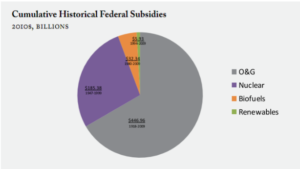
There is no rational explanation for any substantive investment in nuclear power. Utility scale solar is about the same CO2 output as nuclear, while wind is about half of either. By deploying a 50:50 mix of wind and solar instead of nuclear, there would be 150 million tons of savings of CO2 per year over nuclear. And wind and solar are a lot cheaper than nuclear. Right now unsubsidized onshore wind and solar are under $40 per MWH or 4 cents per KWH, and many places are already seeing $20 per MWH. That’s 2.5 to 7.5 times cheaper than the nuclear. Learn more at – US Could Achieve 3 Times As Much CO2 Savings With Renewables Instead Of Nuclear For Less Money.
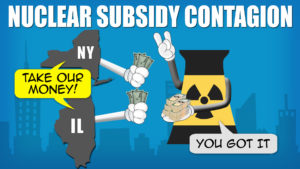
So how can there be attempts to revive nuclear energy? Through governmental subsidies in several countries including the U.S., France, England, Japan, and China. In 2017, a proposal by the Donald would have given an estimated $10.6 billion annually to nukes and coal. But when that idea crashed and burned, several states have passed bailouts, like the $300 million in Ohio, the potential billions in New York and New Jersey, and Federal low interest loans of $12 billion in Georgia to construct the over-budget Vogtle nuke. Without this “good money after bad”, nuclear energy would collapse under its own weight, leaving the money to real solutions through renewables – The Green New Deal Promises Peace and Progress. Will Nuclear Advocates Undermine it?.
Corn Ethanol Subsidies: It may have seemed apparent to members of Congress in 2005 that if a motorist pumped a gallon of fuel made from corn into their gas tank, a gallon of fossil fuel would be left in the ground. So they passed the Renewable Fuel Standard which mandates that gasoline contain a minimum of 10% ethanol. But the 1-gallon per 1-gallon ratio is a simplistic myth, and it’s now apparent that ethanol exacerbates climate disruption. Studies by the International Institute for Sustainable Development have found “that the CO2 and climate benefits from replacing petroleum fuels with biofuels like ethanol are basically zero.

Producing ethanol uses more energy than is contained in the resulting fuel, according to Cornell ecologist David Pimentel. The reason is the corn crops are grown with fossil fuel intensive machinery and inputs, to prepare the fields, plant the seed, cultivate the crop, fertilize and pesticide it with fossil fuel inputs, harvest it, dry it, and transport it to an ethanol refinery. So once again, follow the money to the bottom of this scam. Cargill and Archer Daniels Midland (ADM) are the main benefactors of increased Federal subsidies to agribusiness and tax credits to ethanol refiners – The Real Scoop on Biofuels.

BlackRock Divesting from Fossil Fuels: In contrast to such subsidized market distortions is a recent announcement by Blackrock, the world’s largest investment management corporation, with $6.96 trillion in assets under management. If the estimate is accurate that there’s about eighty trillion dollars of money on the planet, then BlackRock holds 10% in its portfolio of stocks and pension funds and the like. So there was a seismic shift felt when BlackRock acknowledge the urgency of the climate crisis, and said it will begin to start redirecting its investments. They have a considerable percent of funds in fossil fuels which have been underperforming, with some $90 billion losses to date.
Climate campaigners have been targeting BlackRock for years, and their CEO, Larry Fink, had conferred with Pope Francis who urged leading corporations to shift to renewables. But it was the $90 billion value destruction that brought BlackRock to its decision. According to a report by the Institute for Energy Economics and Financial Analysis (IEEFA), “Out of BlackRock’s $90 billion in estimated losses, 75% are due to its investments in four companies alone – ExxonMobil, Chevron, Royal Dutch Shell and BP”. Because of its sheer size, BlackRock is hugely influential in the financial sector. Kingsmill Bond, an analyst who used to work at Citibank and Deutsche Bank, “I, for one, see this as the beginning of the end for the fossil-fuel system”. Learn more at – Is BlackRock announcement “beginning of the end for fossil-fuel system?”, and Citing Climate Change, BlackRock Will Start Moving Away from Fossil Fuels.
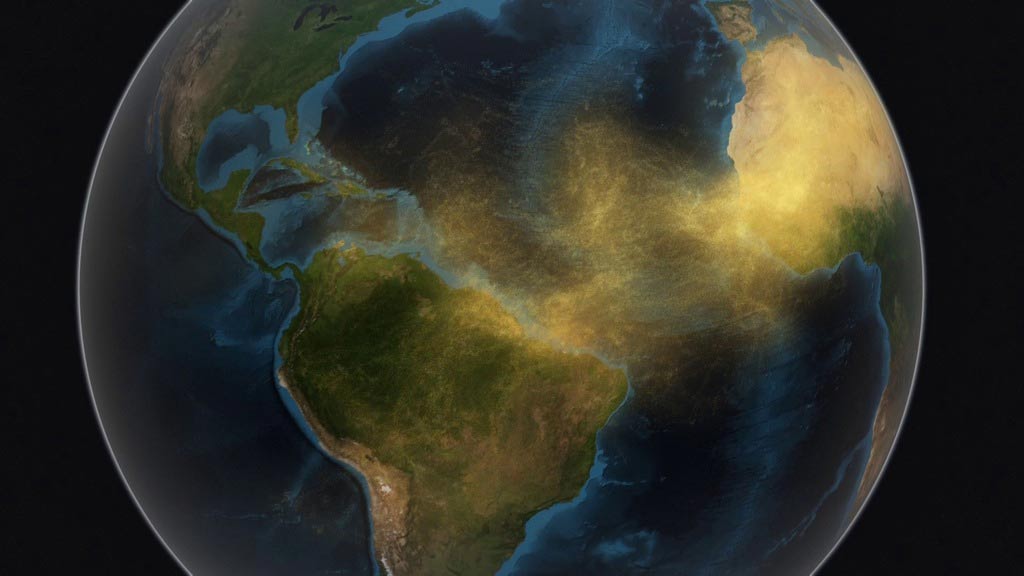
The Amazon Rainforest is a moist broadleaf forest that covers 5.5 million square kilometers (1.4 billion acres) of the Amazon Basin which totals 7 million square kilometers (1.7 billion acres). Over half of the rainforest is located in Brazil but it is also located in other South American countries including Peru, Venezuela, Ecuador, Colombia, Guyana, Bolivia, Suriname and French Guiana. The Amazon represents over half of the planet’s rainforests, comprising the largest and most species-rich tract. It is home to half of all life on the planet.
It’s also commonly said that “the Amazon Rainforest is the lungs of the planet, producing 1/4 of Earth’s oxygen. Yes and no. Being such a huge aggregation of plants (making oxygen through photosynthesis), it does produce 20 times more oxygen than humans need. But none of the oxygen leaves the Amazon, because all the animal life there uses it among themselves. Nevertheless, the Amazon is critically instrumental in the larger process, indirectly supporting oxygen production. The process starts in Africa, in a place called the Bodélé Depression of the Sahara Desert.

10,500 years ago, a 5000 year period of monsoon rains over the Sahara Desert transformed the region into lush and habitable savanna. A number of low areas became lakes, and as with other bodies of water, there flourished an organism, four times thinner than a human hair, called a diatom, a type of phytoplankton. Each diatom lives only six days, yet they amass in vast numbers by doubling their population every 24 hours. After each boom-bust cycle, billions of dead diatoms settle to the bottom of oceans or seas, accumulating in thick layers. The key to future oxygen cycles lie in two essential minerals in the diatoms’ “skeletons” – phosphorous and iron – Saharan Dust Feeds Amazon’s Plants, and The Amazon Rainforest Gets Half Its Nutrients From a Single, Tiny Spot in the Sahara.

The Bodélé Depression in central Chad is an ancient dried up seabed, consisting of millions of tons of dead diatoms. From this site, and others in the Sahara, strong winds pick up 182 million tons of diatom dust each year and carry it across the Atlantic Ocean, where rains deposit about 72 million tons of it over the Amazon basin. The diatom-laden rain fertilizes the Amazon forest with phosphorous, replenishing the supply of this essential mineral which had leached away over the previous year. In turn, the rainforest trees transevaporate moisture from the soil up through their leaves. For example each Brazil Nut Tree, one of what are called “super trees”, lifts 260 gallons of water into the air daily – The Amazon’s Brazil nut tree creates its own rainfall — and it’s in danger. Each morning, a huge upward torrent of fog emanates from the treetops, condensing as it cools to form clouds. These rain clouds head west, encounter the Andes, and release the rain, which leaches phosphorous from the soil and carries it to the ocean to nourish the growth of diatoms.
The last stage of oxygen production is triggered by trace amounts of iron carried in the African diatom dust. Much of the deep ocean is devoid of iron, making it blue, while iron-rich coastal waters are green with biological growth. Iron is a limiting factor for plant metabolism, and diatoms need iron to photosynthesize and make oxygen. The dust from the Bodélé Depression contains iron, and only trace quantities are needed. The amount of iron needed in a ton of water would weigh about as much as a single eyelash. Between 71% and 87% of the iron in seawater samples originated in dust storms from the Sahara desert, enabling the diatoms to flourish and produce oxygen – Desert Dust Feeds Deep Ocean Life.
Unfortunately, as with other oceanic organisms, warming ocean temperatures due to climate disruption slow the growth of diatoms. The primary function of diatoms are as phytoplanktons making oxygen. Most data sources attribute 50% of the oxygen on Earth to diatoms, though some estimates are even higher. However, a study done at the University of Leicester has shown that if ocean temperatures rise around six degrees Celsius, oxygen production by phytoplankton could cease by disrupting the process of photosynthesis. The study’s lead analyst said “About two-thirds of the planet’s total atmospheric oxygen is produced by ocean phytoplankton, and therefore cessation would result in the depletion of atmospheric oxygen on a global scale. This would likely result in the mass mortality of animals and humans” – Failing phytoplankton, failing oxygen: Global warming disaster could suffocate life on planet Earth.

The Green New Deal is basically just a framework for a society to cut climate emissions by cutting fossil fuel use. Most of the details remain to be devised. The principle pillar most commonly cited is that of 100% renewable energy, but again, the type of society to be fueled by renewables is undefined. Richard Heinberg has explained that human societies “didn’t have to wait for biological evolution to slowly deliver improved organs. Cultural evolution rapidly supplied new ideas, behaviors, and tools that enabled us to take over habitat from other creatures. Starting roughly in the 19th century, concentrated energy of fossil fuels sped up cultural evolution to the point where disruptive cultural innovations . . . are spiraling entirely out of our control, notably, the planetary feedbacks associated with climate change”. – Power, the Acceleration of Cultural Evolution, and Our Best Hope for Survival. It’s not just the type of energy use that must change, but the quantity and pace of energy use.
Award winning ecological and energy journalist, Andrew Nikifaruk, has written “We have a ways to go if we choose to reduce emissions by simply replacing fossil fuels with wind turbines. What also matters is using less energy. We have to look at downsizing, degrowth, using less”. Those are critical considerations for crafting a successful Green New Deal. It’s not easy to grasp the kind of energy transition that must take place by comparing the various percentages of renewables growth and ratios of fossil vs. renewable use rates. But consider how Tad Patzek, a professor of petroleum and chemical engineering in Texas, puts it. “If we divide the days of the year up based on total energy use, fossil fuels — oil, coal and natural gas — powered the globe for 321 days in 2018. Dams and nuclear power kept the lights on for 15 days. Renewables energized the globe for only about 29 days, and most of that energy came from biomass or wood burning.”

Roger Pielke Jr., a Colorado professor, recently noted “If we really wanted to reach zero carbon emissions by 2050, and we solely choose wind power as the solution, we’d need to build and deploy 1,500 wind turbines on about 300 square miles every day for the next 30 years”. That’s impossible, if for no other reason than the amount of fossil fuel needed to build them. But it illustrates the magnitude of society’s challenge. The math doesn’t work to simply keep the party going with renewables. Globally, electrical demand has been rising faster than the increase in production from renewables for decades, with little or no change. David Hughes, one of Canada’s most esteemed energy analysts, pointed out that “We need to radically reduce energy consumption and use renewables to actually retire fossil fuel infrastructure”. To date, the evidence shows that we have largely used renewables to consume more energy – It Bears Repeating: Renewables Alone Won’t End the Climate Crisis.
Nate Hagens, a former Wall Street wolf and now an adjunct professor at the University of Minnesota, emphasizes that our current energy glut lifestyle and the Green New Deal both suffer from the same shortcomings. Neither understand that it’s energy flows which underpin economic flows and growth. Longtime energy analyst, Andrew Nikifaruk explains, “The fossil fueled business-as-usual model pretends that expensive fossil fuels like fracked oil or bitumen can replace cheap conventional stuff with no global economic contraction. They can’t. The Green New Deal model pretends that renewables can provide the same quality and quantity of energy as fossil fuels with no global upheaval. They can’t. Both ignore the limits imposed when 7.7 billion human beings are consuming the planet, and the dire consequences of that for biodiversity. Any way you look at it, overpopulation is part of the problem.”
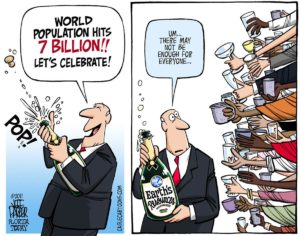
Hagens thinks the world needs a non-partisan conversation about this reality, and about how to prepare for a 30-per-cent drop in energy consumption. He says civilization has three options: it can muddle on, bend, or break. Muddling is what we are doing now. So far, no one is talking about bending. That would require dramatic reductions in energy spending and a different way of living. But that’s the keystone to a realistic, though extremely difficult, Green New Deal – The Green New Deal Battles Business as Usual. Both Will Doom Us.
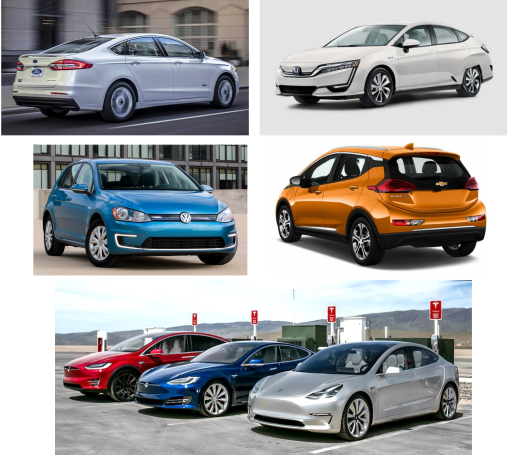
Saturday, 14 September 2019, 10:00am-2:00pm – FREE.
RAIN DAY: Sunday, 15 September 2019, 10:00am-2:00pm
Hy-Vee Grocery, 3504 Clinton Prkw., Lawrence KS 66047
The second annual Lawrence Electric Vehicle Showcase is being organized by the Sustainability Action Network with the help of our co-sponsor, The Sierra Club/Wakarusa Group. There will be at least 21 cars on display by their owners, including Nissan LEAF, Tesla Model S, Model 3, and Model X, Toyota Prius Prime, Chevy Bolt and Chevy Volt, and Ford C-MAX Energi. You can talk with EV owners about the advantages of driving an EV. Here’s an EV guide showing the range and price of each vehicle – EV Guide_June 2019.
Electric vehicles are smooth and quiet, with high torque and instant acceleration. Driving on electricity is about five times cheaper than fueling with gasoline, and maintenance is cheaper too. Because they get 100mpg equivalent or better, EVs are one the most effective ways that motor vehicles can reduce petroleum use and cut air pollution. When charged by renewable energy, EVs are zero emissions. Because they are so much more efficient than gasoline cars, EVs charged from a utility produce fewer emissions than internal combustion vehicles.

We’ll have electric bicycles too, and electric scooters. Electric cars are a great improvement over fossil cars, but E-bicycles are the gold standard, using but a fraction of a percent of energy used by a motor vehicle. A 4000lb electric car requires up to 60 Kilowatts (60,000 Watts) of electricity per hour, and consumes about ten times the electricity used by a home. Pedaling a standard bicycle uses only 150 Watts to go 20mph, and slightly more if electric pedal assisted. More info is available at – Lawrence Electric Vehicle Showcase.

In addition to the local sponsors, national sponsors are Nissan LEAF, Plug In America, the national Sierra Club, and the Electric Auto Association.




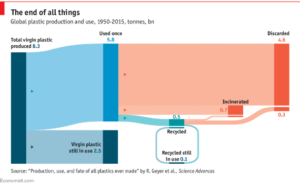


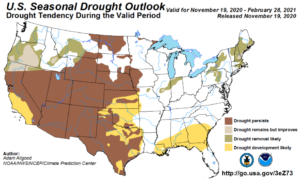




























Recent Comments